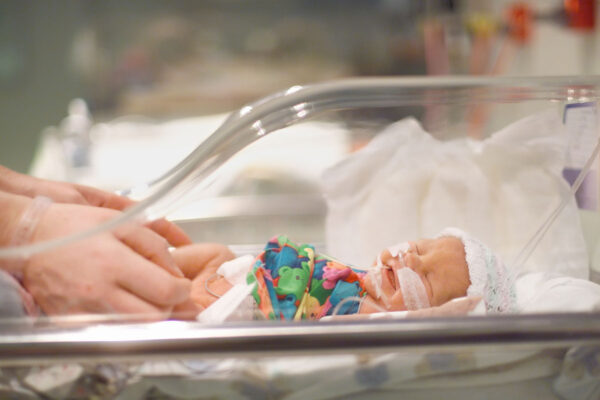People have long prized silver as a precious metal. Now, silver-coated endotracheal tubes are giving critically ill patients another reason to value the lustrous metal. In a study published in the Aug. 20, 2008 issue of the Journal of the American Medical Association, researchers at Washington University School of Medicine in St. Louis and the NASCENT Investigation Group, report that the silver-coated tubes led to a 36 percent reduction of ventilator-associated pneumonia (VAP).
VAP can strike up to 15 percent of people who are intubated to aid breathing and can cause death in an estimated 20 percent to 40 percent of those stricken.
“VAP is a relatively common infection and increasingly one caused by antibiotic-resistant bacteria,” says the study’s lead author, Marin H. Kollef, M.D., a Washington University pulmonary specialist at Barnes-Jewish Hospital. “There have been many attempts to prevent VAP, most of which have revolved around modifying hospital practices. The silver-coated endotracheal tube has an advantage in that it doesn’t require any additional effort by nurses, therapists and doctors, who may already be over burdened.”
Past efforts to prevent VAP included elevating the head of a patient’s bed, repeatedly checking ventilator tubing and emptying condensates, monitoring feeding to prevent reflux into the lungs, frequent handwashing and isolation of infected patients. The silver-coated endotracheal tube is structurally identical to a typical tube, so its adoption would not require any change in standard hospital procedures.
Studying 1,509 patients in 54 centers who were intubated for 24 hours or more, the research group found that 7.5 percent of those with uncoated tubes developed VAP. In comparison, 4.8 percent of those with silver-coated tubes developed VAP, a 36 percent reduction.
Kollef indicates that about 80 percent of patients are intubated for less than 10 days. Looking at just the first 10 days of intubation, the silver-coated tubes were associated with a 48 percent reduction in VAP, and when VAP occurred in patients with silver-coated tubes, it occurred later on average than in those with uncoated tubes.
Silver kills bacteria and yeast by sticking to the organisms’ enzymes, genetic material and other molecular components, preventing basic functions and interfering with reproduction. These organisms very rarely develop resistance to silver, and the metal has no known side effects in humans.
The new endotracheal tubes are coated with a silver-containing polymer, created by C.R. Bard Inc., that releases silver ions to the surface of the tubes. There, silver exerts a broad-spectrum antimicrobial effect, reduces adhesion of bacteria to the tube and blocks the formation of biofilms, communities of microorganisms that build up special protective structures on surfaces.
The number of antibiotic-resistant organisms is on the rise, making it ever more vital to prevent VAP and related infections, says Kollef, professor of medicine in the Division of Pulmonary and Critical Care Medicine. Even when an infection can be treated with antibiotics, it takes a physical toll on a patient, he notes.
Kollef, also medical director of the medical intensive care unit and of respiratory care services at Barnes-Jewish Hospital, says the silver-coated tubes are likely to be more expensive than uncoated tubes, but that the cost is easily recovered if the silver-coated tubes can reduce the number of VAP cases.
“I think this is just the beginning for this kind of technology,” Kollef says. “The silver-polymer coating will most likely be applied also to tracheostomy tubes and also become available for use in pediatric medicine. In the future, we could see other types of coatings with other functions placed on devices that come into contact with the body.”
Kollef MH, Afessa B, Anzueto A, Veremakis C, Kerr KM, Margolis BD, Craven DE, Roberts PR, Arroliga AC, Hubmayr RD, Restrepo MI, Auger WR, Schinner R. Silver-coated endotracheal tubes and incidence of ventilator-associated pneumonia. Journal of the American Medical Association, Aug. 20, 2008.
Funding from C.R. Bard Inc. supported this research. None of the study authors is associated with C.R. Bard Inc. Marin Kollef received speaker fees from the company.
NASCENT is the North American Silver-Coated Endotracheal Tube Investigation Group, which includes members at 11 institutions in the United States and one in Germany.
Washington University School of Medicine’s 2,100 employed and volunteer faculty physicians also are the medical staff of Barnes-Jewish and St. Louis Children’s hospitals. The School of Medicine is one of the leading medical research, teaching and patient care institutions in the nation, currently ranked third in the nation by U.S. News & World Report. Through its affiliations with Barnes-Jewish and St. Louis Children’s hospitals, the School of Medicine is linked to BJC HealthCare.

